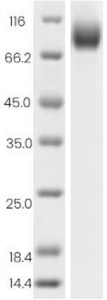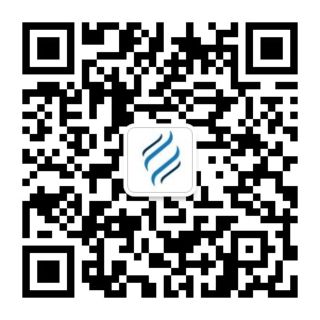Human CD274 Protein, Fc Tag, Avi Tag
-
产品编号
KMP2304
-
别名
程序性死亡蛋白配体-1, programmed cell death 1 ligand 1, CD274
-
规格
- 50ug
- 100ug
- 200ug
| Catalog Number | KMP2304 |
| Alias | 程序性死亡蛋白配体-1, programmed cell death 1 ligand 1, CD274 |
| Size | 50ug, 100ug, 200ug |
| Product Description | The Human CD274 Protein(KMP2304) is produced in HEK293 Cells and the target gene encoding Phe19-Thr239 is expressed with a Fc, Avi tag at the C-terminus. |
| Molecular Name | CD274 |
| Product Introduction | CD274(PD-L1):免疫球蛋白超家族(IgSF)成员,通过跨膜形式参与免疫细胞功能调控。 |
| Molecular Weight | 25.3 kDa |
| Expression System | HEK293 Cells |
| Species | Human |
| Purity | >95% |
| SDS-PAGE |  |
| Purification | Affinity Purification |
| Uniprot ID | Q9NZQ7 |
| Storage Condition | Aliquot and store at -20℃ to -80℃. Avoid repeated freezing and thawing cycles. |
| Formulation | 20mM PB, 150mM NaCl, pH7.4 |
| Shipping Condition | In general, the proteins are provided as lyophilized powder which are shipped at ambient temperature. They are shipped out in dry ice if supplied in liquid form. |
| Background | CD274, also known as B7-H1 or programmed death ligand 1(PD-L1), is a 40 kD type I transmembrane protein and a member of the B7 family within the immunoglobulin receptor superfamily. Programmed death-1 ligand-1(PD-L1, CD274, B7-H1) has been identified as the ligand for the immunoinhibitory receptor programmed death-1(PD1/PDCD1) and has been demonstrated to play a role in the regulation of immune responses and peripheral tolerance. By binding to PD1 on activated T-cells and B-cells, PD-L1 may inhibit ongoing T-cell responses by inducing apoptosis and arresting cell-cycle progression. Accordingly, it leads to growth of immunogenic tumor growth by increasing apoptosis of antigen specific T cells and may contribute to immune evasion by cancers. PD-L1 thus is regarded as promising therapeutic target for human autoimmune disease and malignant cancers. |
| Endotoxin | <1.0 EU/ug determined by the LAL method |
| Product Declaration | 该产品仅供科研使用,不可直接用于人体或注射。 |
可在纯化过程中加入蛋白酶抑制剂、低温操作,优化储存条件(如分装冻存于-80°C),并避免反复冻融。某些情况下,可选用蛋白酶缺陷型宿主菌减少降解风险。
常用SDS-PAGE、Western Blot检测表达,BCA/Bradford法测浓度,HPLC或质谱分析纯度,生物活性实验(如ELISA、酶活检测)验证功能。





 0
0
